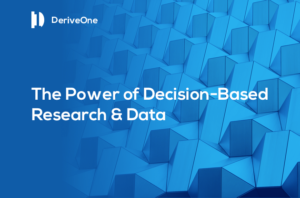
Marketing Darwinism met up with Dharmesh Godha of Advaiya to see how the company is progressing and what their next “big bet” is on.
Marketing Darwinism: Dharmesh, good to chat again. I know you’ve done a lot with the company over the past several years; give us a refresher on who Advaiya is and what the company stands for.
Dharmesh: Thanks Paul. To start with, it’s worth mentioning our tagline here- “Making Technology Work.” While that might sound cliché, we find that the abundance of technology choices and methodologies of implementation actually can conspire to make it difficult for companies to make the optimal bets. Further, technology by itself doesn’t solve problems, so we work hard to make customers’ technology choices work in their context and in a manner that most befits them.
We started the company for this reason. No doubt, along the way, we took some turns, hit a few dead-ends but also found a few amazing areas to focus on. All companies evolve. Interestingly, we have come full-circle to a real competency- helping companies digitize in their own contexts and without the orthodoxies often imposed by technology-forward perspectives that don’t recognize that there are multiple paths to success.
So that’s a long way to say that we stand for driving our customers’ growth and success in their own image not in some “perfect state.” We have found that that state doesn’t exist!
Marketing Darwinism: This sounds like “Digital Transformation”. Is that what you focus on?
Dharmesh: Yes and no. DT is an amazing phrase but it has come to mean too many things at once. We look at things in a forward-yet-practical way- start with a particular need a company has- a baby step- and get it right- technically, culturally, and contextually. Then help the company use success in that one area or workload to change other area, processes, and workloads. So yes it is transforming companies with digital technologies but it’s not about a “DT” button you can press and voila! -things work.
Marketing Darwinism: You work with some amazingly successful, big names. Does that create pressure on the company?
Dharmesh: We work with the largest of the large tech companies and with startups. We are drawn to challenges and patterns where we can honestly add value. We also work with a variety of organizations in what are called “traditional” industries. That’s where most of the work done is and where most people in the country are employed. We learn amazing things from manufacturing and services companies daily and can then apply these learnings to other companies looking to evolve and hone their offerings. Yes, the “ways” of large companies can create pressure but we thrive in the cauldron and love every minute of it.
Marketing Darwinism: What are your big bets for 2019 and 2020? What are you most excited about?
Dharmesh: We are incredibly excited about helping companies find new life with the proper use of the amazing Business Applications and Analytics packages available in the market today. It was unheard of, even a few years ago, to be able to run complex infrastructure with complex tasks in an agile manner without pitting IT and Business against each other. We thrive on building internal bridges in our customers and watching them do amazing things. So, I can say that our big bet for the next 18 month is Business Apps.and Analytics We also have invested heavily in our “Managed Services” business which is growing rapidly and allowing us to really feel “as one” with many of our customers.
Marketing Darwinism: We’d be remiss if we didn’t talk about Marketing. Two prongs here- what are you doing to help your customers market and how are you using marketing to gain traction?
Dharmesh: Great questions. We continue to do a lot of work in what we call TMAAS- Technical Marketing-As-A-Service. We believe that Enterprise technology has to be talked about in a narrative manner that connects value to all aspects of purchase, implementation and tweaking. We also believe that Brand building and Sales Enablement are connected and we offer that perspective to our customers.
In terms of our own efforts, we gain a lot from events, 1: few executive conclaves, and work of mouth marketing. Though we are small, we spend considerably in those areas and have been lucky to realize success there. Increasingly, we co-market with our customers and this also has yielded fruit.
Marketing Darwinism: Any parting thoughts?
Dharmesh: Thanks so much Paul. We want believe that global delivery models aligned to real value conversations are the keys to success. We hope to double our size in the next 18 months and are very thankful to our customers, partners, and well-wishers for all their support.











